
Nov 06 Where’s My Ride
Dr. Bryce Kositz, IT Curves
bkositz@itcurves.net
Rider Interactivity Tools, Artificial intelligence Inside
Introduction
A complete, intelligent transportation solution consists of four major segments: onboarding, reservations, dispatch and routing, and the user experience, with each segment consisting of multiple modules. Every segment and its modules are essential for the functioning of the whole, endto-end, efficient system. However, many Intelligent Transportation Management Software (ITS) suppliers today do not provide open APIs between these segments and modules.
In a mature industry, often different sets of vendors specialize in one or more area and compete to create the most optimal, complex, and thorough components in their area of specialty. These specialized vendors design their components with open API or standardized API, allowing plug-and-play integration with other vendors’ equally complex components. These multi-vendor cooperative systems result in an end-to-end, integrated, best of breed suite of components creating a seamless, efficient, and well supported operational system.


IT Curves specializes in the User Experience segment, with our offerings consisting of multiple, excellent, and field-tested modules. The rider experience spans from reservations, ride tracking, splitting fare by travel segment, calculation of copay, onboarding using facial recognition, and payment processing using online rider wallet, and more. The automation of the rider experience is particularly important not only to improve the user experience and 2 enhance business operations, but to prepare for the future of autonomous vehicles. Artificial intelligence and intelligent reality augmentation features will be necessary to replace all the other actions taken by drivers, including onboarding riders, processing payment, and other functions without human intervention. These actions are even more crucial for riders with either physical or mental disabilities and provide increased accessibility even prior to the introduction of autonomous vehicles.
In this paper, we will describe some of the innovative development work IT Curves has undertaken to improve the Rider Experience. Some of this work was funded by a 2021 Federal Transit Administration Mobility for All grant.
Where’s My Ride
The IT Curves system commingles paratransit and microtransit so that, not only are paratransit riders encouraged to transfer to fixed routes, but paratransit vehicles’ excess capacity can also serve additional on-demand riders. High-capacity fixed routes including large buses and subways are, and in many routes will remain, the foundation of a
The Where’s My Ride system features a smart phone app for riders, an interactive telephony system, and an interactive rider recognition and onboarding suite. Where’s My Ride is not only easy for customers to use it has features for all customers of any age of skill – but also is proven to creates efficiencies for business. Using Where’s My Ride, riders can book rides and answer other common questions automatically, rather than reach a call center agent. This reduces the cost of business, but more importantly, the application opens innovative possibilities for the integration of new technologies. The goal is for Where’s My Ride to allow users to complete all trips functions under rider own control using the provided interactivity tools.
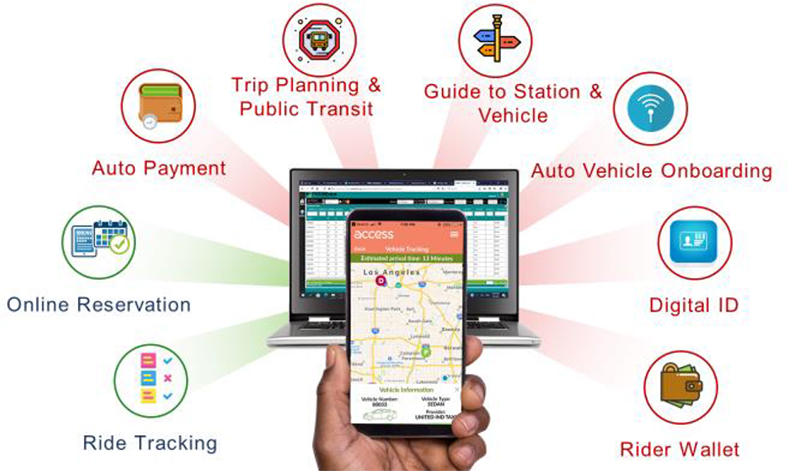
Microtransit will complement high-performing fixed routes and profoundly improve public transit routes in low density or geographically challenging areas. In suburban or low-density areas, microtransit’s smaller vehicles are able to operate more efficiently than large busses. Moreover, the flexibility of on-demand services expands the zone of The rider interactivity tools provide all the modern functionalities riders expect to manage their travel planning and transportation management. Riders can search for available services, schedule trips, book on-demand rides, view their trip history, pay for rides, track vehicle location, and more. The smart phone app is available through both the Apple and Google stores and compatible with all modern mobile devices. The Interactive Vehicle Optical (IVO) app utilizes android tablets’ camera for rider face recognition and QRC recognition, and powerful Interactive Voice Response offer riders automated voice communications to book and track their rides. The various ways Where’s My Ride is offered – by app, web portal, and Interactive Voice Response – promote accessibility to all populations.

Trip Planner and Public Transit
Where’s My Ride can provide mixed-mode travel planning and navigation, allowing booking for demand-response paratransit mixed with fixed transit routes. The app’s innovation is in offering fixed transit planning capabilities to the paratransit ridership. Using comprehensive accessibility data on each stop and vehicle and correlating that information to the individual rider’s mobility needs, the app identifies which routes the rider can take. The app can also plan out multi-modal trips, so riders with mobility needs can take paratransit
to a stop where they can transfer to an accessible fixed route. Decreasing the usage and length of paratransit trips greatly increases the cost efficiency of the network.
From the app, users will see the screen displayed here to set their origin, destination, preferred time of either arrival or departure, and search for public transit routes. The app will offer multiple options to the rider based on their mobility needs and the potential routes available. Because each user profile, which is necessary to log into the app, contains the rider’s mobility needs, the search is automatically filtered for their mobility requirements. The app is fully capable of planning out trips across multiple modes of transit and offering the rider choices, from full-price door-to-door paratransit to discounted trips on fixed route public transit. The
navigation functions, covered later, will help all users be confident in their ability to transfer between rides and through busy depots to find their next vehicle.
vehicles operating in such areas can offer this microtransit service using their excess capacity. Using excess capacity is beneficial for paratransit in two ways. First,
Rider Digital ID
IT Curves’ IVO app installed on an android tablet inside a vehicle verifies the Digital ID of riders using their face or QRC on rider ID Card or on riders app. This allows for contactless, reliable, and secure identification of riders for many different uses, all of which improve the speed and efficiency of business operations. Forms of
Digital ID include facial recognition, QR codes, and could be enhanced to offer near field communications. All these forms can be used individually or in tandem to enable multifactor identification. Whether alone or as part of a multifactor identification process, all reduce the incidence of fraud through reliable identification of riders
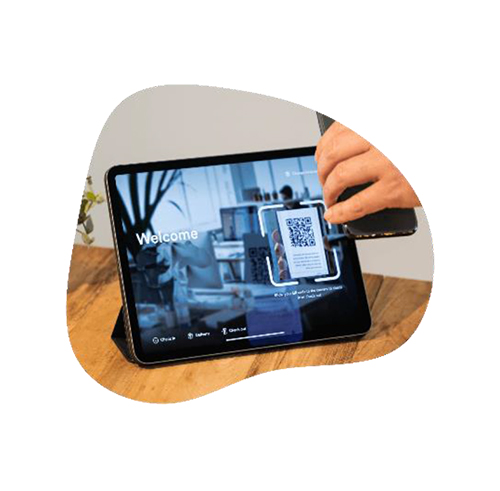
Automatic Onboarding and Offboarding Using Digital ID
Using facial recognition, other Digital ID, or Bluetooth Low Energy (BLE) beacons, riders can be onboarded and offboarded automatically, reducing manual input or error by drivers. Particularly useful in paratransit or other demand-response transportation, using Digital ID to onboard riders reduces the incidence of fraud and improves the efficiency of service.
For riders, automatic onboarding improves their experience by
providing contactless service and expediting the ride. By
detecting either a form of Digital ID or the Bluetooth signal of
the phone associated with the user’s app, the system determines if the rider has an
unperformed trip, identifies the rider, and automatically onboards the rider by issuing
commands to dispatch system to update trip status automatically. Riders and drivers spend
less time managing their ride, improving overall service and satisfaction.
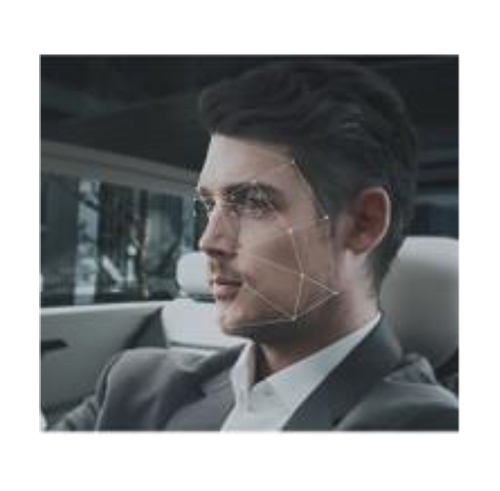
Rider Wallet Module
The rider wallet makes fare payment, billing, and calculating copay an integral part of the system. Payments are directly tied to rides, reducing fraud and mistakes. This
functionality carries through to our comprehensive rider receipt history and balance reporting capabilities.
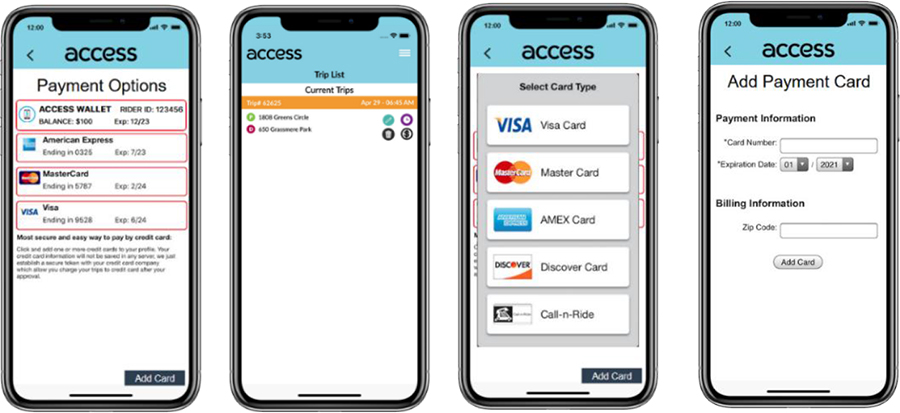
The wallet feature is especially useful for elderly and disadvantaged riders who may not use credit cards. These riders can fill their wallet periodically by sending check or money order to transit or funding agencies. The wallet is used solely for ride copayments. Riders may also elect to refill their wallet with a credit card of their own or that of their guardians. To protect the credit card, IT Curves does not hold card data in the app or the IT Curves cloud; instead, private tokens are established with credit card companies. Riders can set the wallet to charge the credit card to top up their wallet to an amount they determine as soon as the amount in the wallet falls below a certain threshold. They can also access their wallet to view their balance and detailed transaction history.
Automatic Fare Payment
The wallet integrates with Digital ID and automatic onboarding to ensure that payments are automatically deducted upon either onboarding or offboarding. Greater automation creates greater efficiencies in the provision of services. Importantly, the integration of cashless payment reduces the incidence of fraud,
prevents riders from losing paper tickets or cash, improves farebox recovery, and simplifies or eliminates reconciliation of driver collections.
Using Digital ID or Bluetooth capabilities, riders can be charged immediately upon onboarding or offboarding. The app notifies the rider of their successful onboarding, of the deduction of fare from their account, and if their balance is running low. Riders will have full information about and control over their fare payment and
history. Calculations are made immediately even for complicated fares including splitting fare between copayments and subsidies from funding agencies
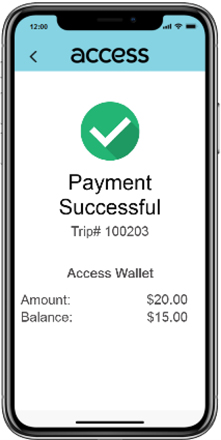
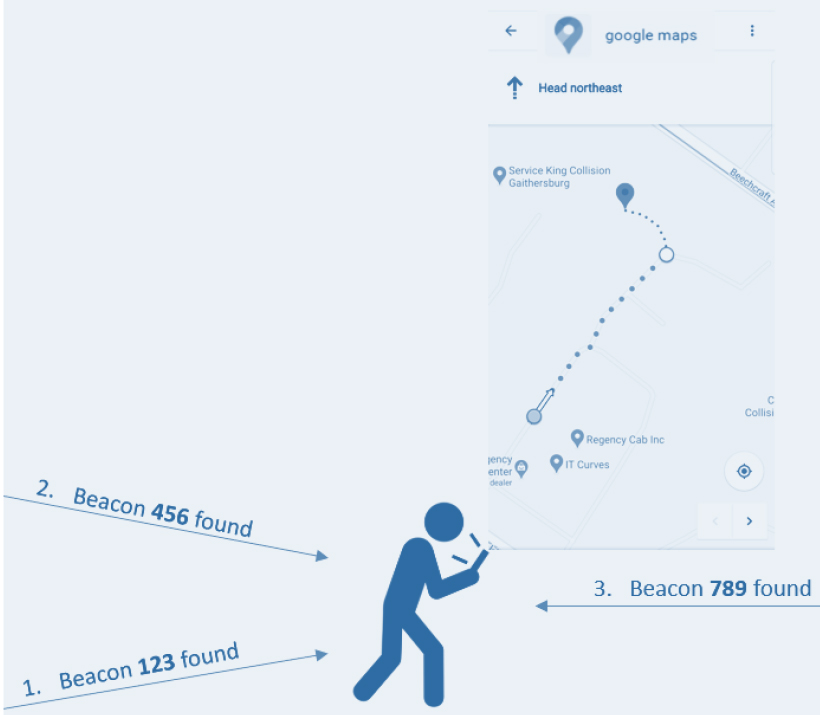
Guide Rider to a Station or Vehicle
BLE devices are widely used today for many Internet of Things applications. IT Curves programs and installs a BLE device in vehicles serving paratransit or fixed routes. These BLE devices periodically transmit a signal containing the vehicle ID and other program information. Riders’ smart phone apps detect the BLE signal from up to 150 feet, and via voice command, device vibration, and visual tools, inform the riders that their specific assigned vehicle is approaching the station. Where’s My Ride app can also navigate riders to their vehicles. This BLE guidance is especially useful for visually challenged riders.
In addition, Where’s My Ride integrates with another smartphone app, “Seeing I Go,” which is designed for navigation through difficult areas, including complex transit hubs, transfer stations and other facilities of interest. Several BLE devices are programmed to transmit their special IDs and installed in strategic places
throughout the building such as doorways, escalators, elevators, and service counters. These inexpensive and simple BLE devices transmit points to virtually map the building layout for the “Seeing I Go” app to help the individual navigate to their point of interest.

This vastly improves the accessibility of vehicles and transfer stations, allowing riders who experience difficulty finding vehicles or navigating though bus stops to fully enjoy and utilize public transit. The same BLE beacons installed in vehicles which provide automatic onboarding and offboarding communicate with rider apps to notify riders where their vehicle is waiting. Using the rider’s vehicle and trip information, Where’s My Ride identifies the beacon ID of the destination vehicle or location and navigates the rider to that destination. Navigation can be by visual aid, audible directions, or text notifications depending on the preferences of the app user. IT Curves has performed extensive testing to estimate distance with the utmost accuracy and ensure that passengers navigate to their destination. These BLE beacons can be placed not
only in vehicles and throughout transit stations, but in important locations such as hospitals or other participating public buildings to help integrate public transit and increase accessibility.
As a rider interactivity tool, Where’s My Ride is designed to grow and accommodate all rider needs in an integrated system. From providing the core functionalities of a booking app to offering extensive Bluetooth beacon capabilities including automatic vehicle onboarding and individualized navigation through busy transit hubs and buildings. Where’s My Ride will be a one-stop rider interactivity tool for all public transit functions now and into the future.

